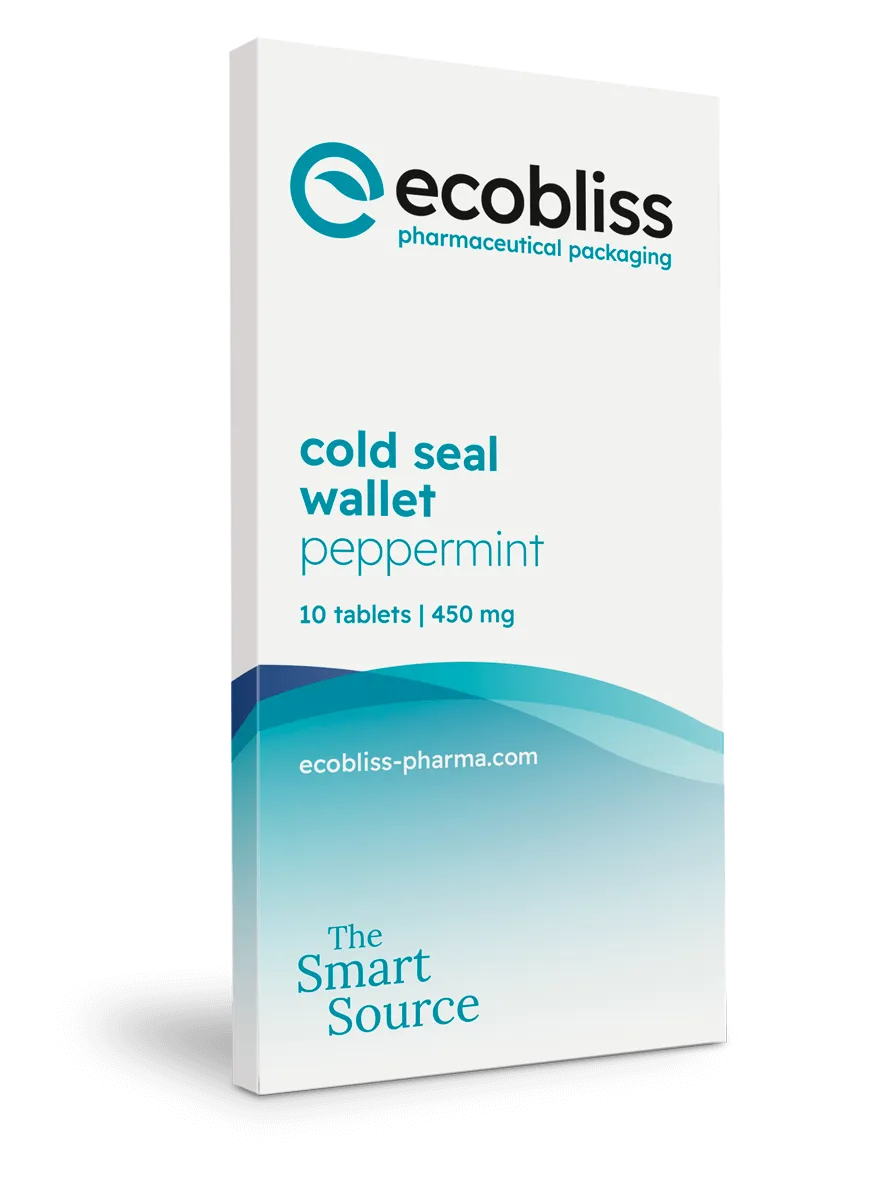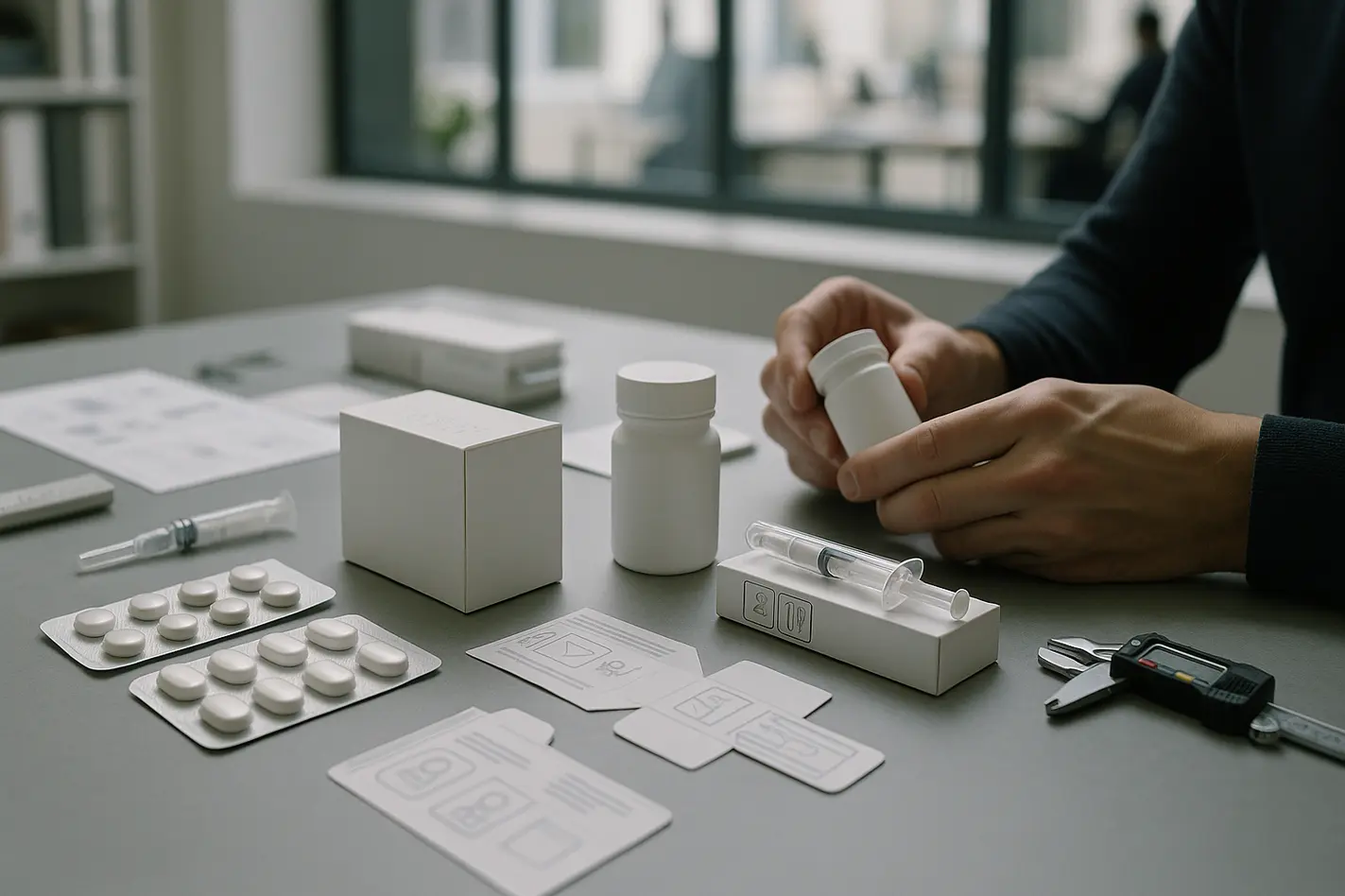User-centric packaging design pharmaceutical means creating medicine packaging that is easy for people to use, from hospitals to homes. It helps patients and caregivers use treatments correctly and safely by focusing on clear instructions, safe formats, and easy handling. This includes features like larger text, child-lock functions, or step-by-step trays for therapies. The goal is to improve daily use, reduce risk, and support better health outcomes.
• Supports patients, caregivers, and medical staff with safer and simpler packaging
• Helps avoid errors with clear labels, pictograms, and safe-opening designs
• Meets legal safety rules while focusing on user needs (like Braille and child resistance)
• Works well for complex treatments, such as step-based dosing or injectables
• Improves real-world usability and aligns with sustainability and supply needs
What is user-centric packaging design pharmaceutical?
This design approach focuses on how real people use medicine packaging. It helps patients, family caregivers, nurses, and pharmacists use medicines correctly, safely, and with less stress. Common mistakes like missing a dose, taking the wrong pill, or opening the wrong pack can happen easily without clear design. A good example is a calendar blister that shows when to take each pill. This helps people remember their schedule and avoid mistakes.
Why user-centric packaging design pharmaceutical supports adherence and safety
Medicine only works when used correctly. If a package is hard to read or open, patients may take the wrong amount or skip the treatment. That puts their health at risk. Older users may struggle with small print or stiff cartons. Children may accidentally open unsafe packs. Many patients treat themselves at home, so packs must feel clear and safe without extra tools or help.
Simple changes can make a big difference. Large fonts, strong colors, and symbols help people understand usage. This is helpful for users with low reading skills or who speak a different language. In treatments that change over time, like titration, packaging with steps guides patients through each change. The layout acts like an instruction sheet built into the medicine box.
Key features of user-centric packaging design pharmaceutical formats
Good packaging includes features that focus on ease and safety. These elements work together to help users read, open, and use the pack as needed.
• Clear labeling: Easy-to-read fonts with strong contrast for visibility.
• Pictograms and plain words: Support for users with limited language or literacy.
• Braille text: Required in the EU so blind users can identify their medicine.
• Child-resistant safety: Keeps children out while letting adults access the pack easily.
• Safe grip and handling: Packages designed for weak hands or limited finger movement.
• Tamper evidence and serial numbers: Improve security while staying user-friendly.
These features are matched to the treatment, user group, and setting, such as home or clinic.
Design for children, older adults, and special therapies
Some patient groups need more support. Children must not be able to open medicine without adults. Older adults may face challenges due to weak grip, poor sight, or joint pain. Some treatments, like injectables or complex dosing, need more steps. These can be hard to follow without the right visual or physical guides on the packaging.
Design must start with risk analysis. For example, by testing and adjusting how much force is needed to open a pack, we can prevent accidental openings while still making it easy for seniors. We can add tactile marks or motion guides to help users do steps in the right order. Our child-resistant and senior-friendly packaging shows how design can fit both safety and ease of use.
How user-centric packaging design pharmaceutical aligns with standards and human testing
Designers must follow laws and standards, such as ISO guidelines or national child-resistance rules. EU cartons must include Braille. Many markets now require serial numbers and tamper-evidence features as part of medicine safety laws. These must fit smoothly into designs users can still read and handle.
We follow human factors in our process. This means studying how real users interact with packs at two stages:
• Formative studies: During design, users test early versions to identify problems.
• Summative testing: At the end, packs must pass checks showing they are usable and safe.
These steps help reach both legal safety and everyday ease in one design. For example, clean fonts and simple layouts make it easier for users to follow instructions at home or in low light.
Smart design for sustainable and efficient packaging
Design also affects sustainability. Using thinner boxes and simple trays lowers material use. Mono-material packs are easier to recycle. Reducing glue or plastic helps with waste goals. But ease of use always comes first. That means packs must be strong enough to travel, simple to open, clear to read, and easy to store.
Compact formats also work well in supply chains. They save storage space, reduce weight in transport, and support smaller batch runs. You can see how these goals combine in one real-life project by reading our case on improving patient usability and sustainability.
How we support user-centric packaging design pharmaceutical needs
We help clients from early ideas to production. Our process is flexible and user-driven. This includes:
• Taking in early feedback from users during format planning.
• Creating artwork with plain fonts, strong visuals, and logical text flow.
• Making samples to test fit in hand, readability, and ease of steps.
• Providing GMP-level production, even late in development or for low volumes.
This is useful when working with rare or high-value medicines. You can read more about our approach in full support from design to pack delivery.
Locked4Kids: proven child-resistant, senior-friendly formats
Locked4Kids is a certified system that protects children while staying easy for adults. It uses visible and touch-based guides so people know how to open it correctly. One design needs a squeeze-and-slide step that children cannot copy. Older users with less strength can still open the pack without help.
It places blisters into a secure holding card. This card keeps packs stable and guides correct use. It also makes it easier to store opened packs safely at home. You can explore these intuitive child-resistant blister formats here.
Why prototyping and early feedback matter
Seeing how a real pack feels in hand helps teams decide what works. That’s why we use prototypes to test function before final production. With a sample, teams can check:
• Grip and feel in both hands.
• How easy it is to open and reclose.
• Text size and how information flows across panels.
Prototypes help reduce mistakes, delays, or redesigns later. You can request a sample pack to review real user-centric options.
Frequently asked questions
What does user-centric packaging design pharmaceutical mean?
It means creating medicine packs that are easy for real users to read, open, and use. This helps improve safety, comfort, and treatment success at home or in clinical settings.
Why is packaging design important for patient safety?
Poor design can cause mistakes, like missing a dose or taking the wrong medicine. Clear and easy packs improve correct use, reduce stress, and support better health results.
Who benefits most from user-centric design?
Patients, caregivers, older adults, and children all benefit. So do healthcare providers who want safer options. The design must support each user group’s needs.
How do legal rules affect pharmaceutical packaging design?
Packs must meet safety regulations such as ISO for child resistance and include Braille in the EU. They must also show tamper evidence and often include tracking numbers. These must remain easy to understand and use.
Can safe packaging also be simple to recycle?
Yes. With better materials and compact formats, it is possible to reduce waste without making packaging harder to use. The design must balance load protection, handling, and environmental impact.
Request a free sample now!









